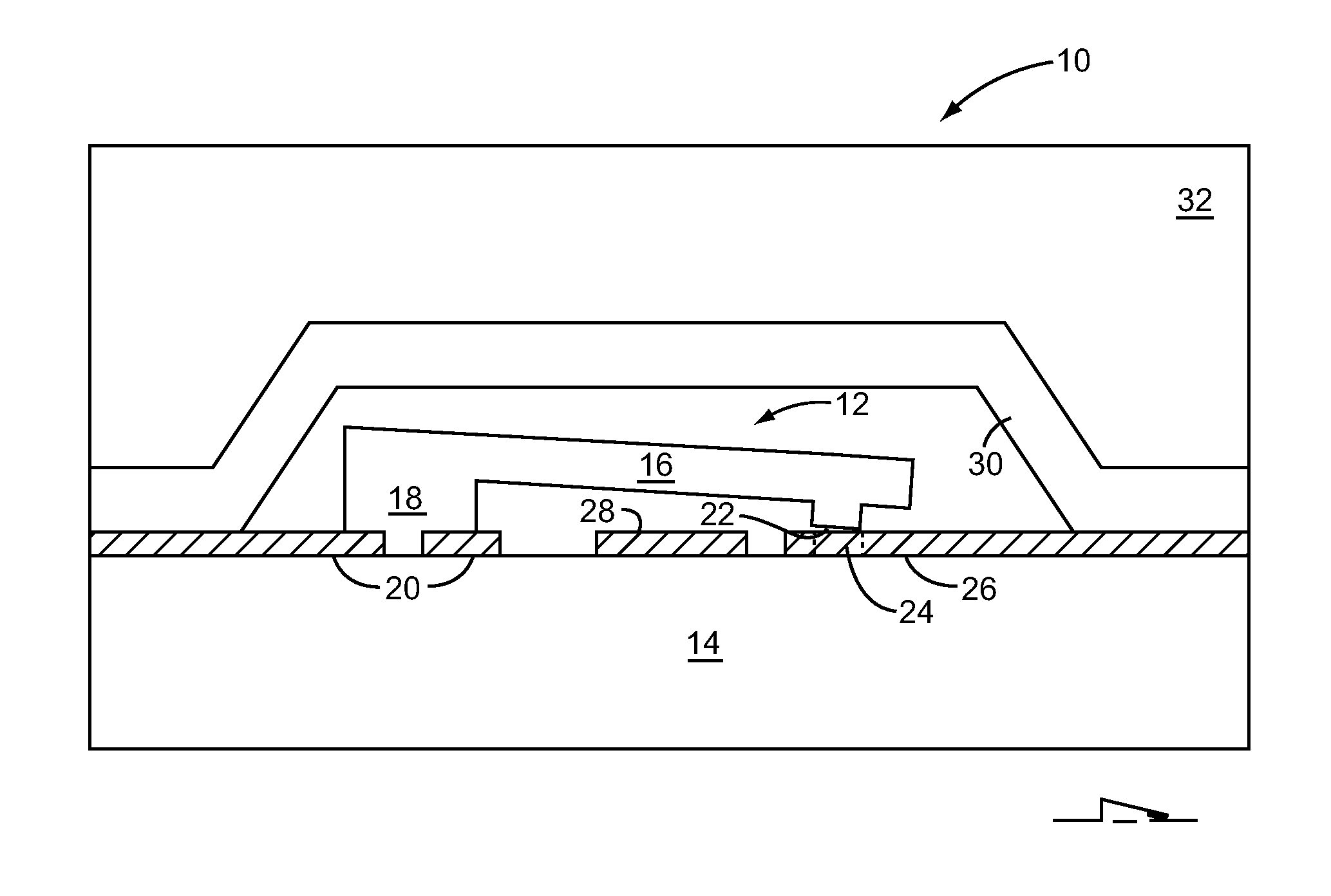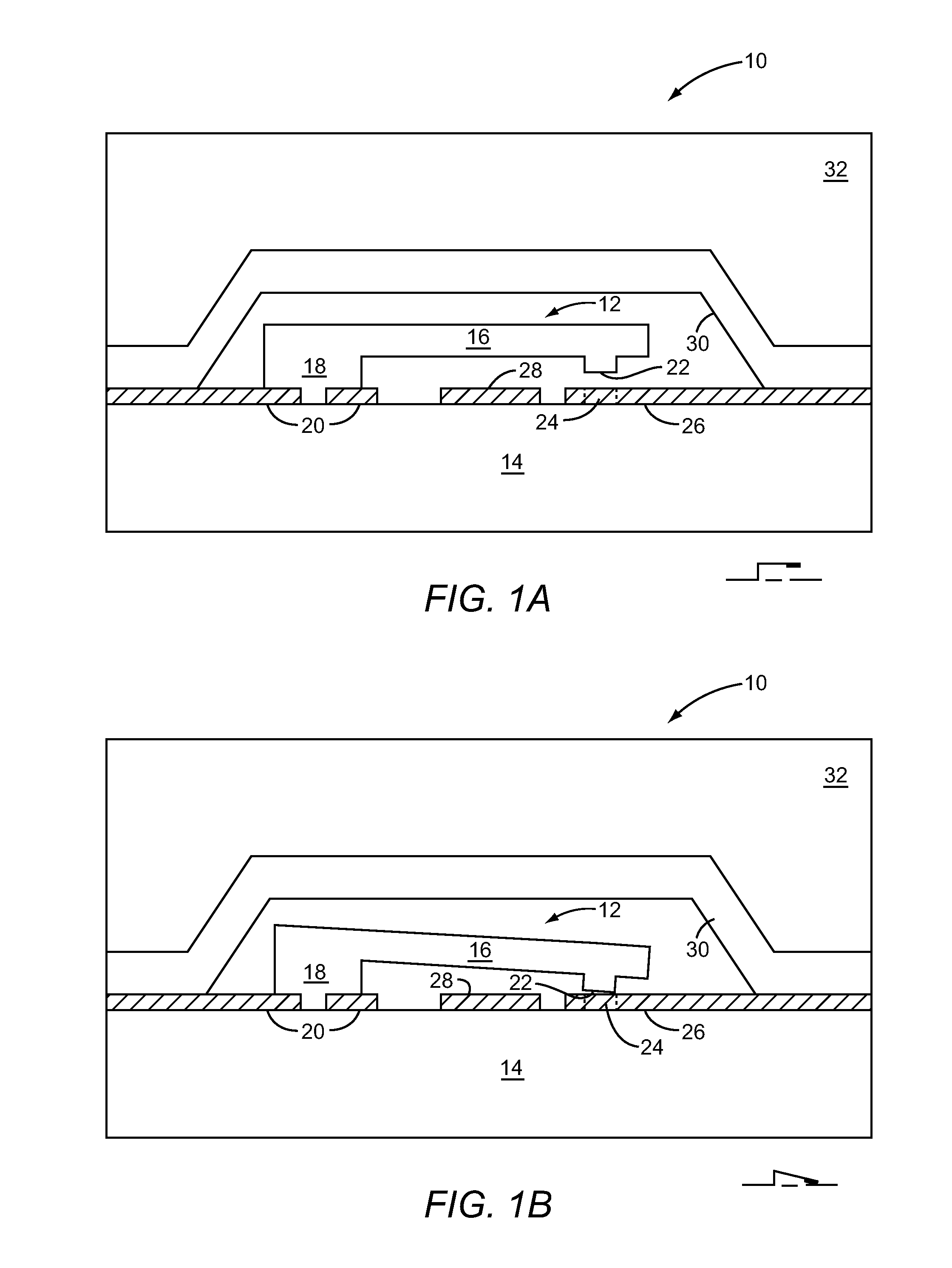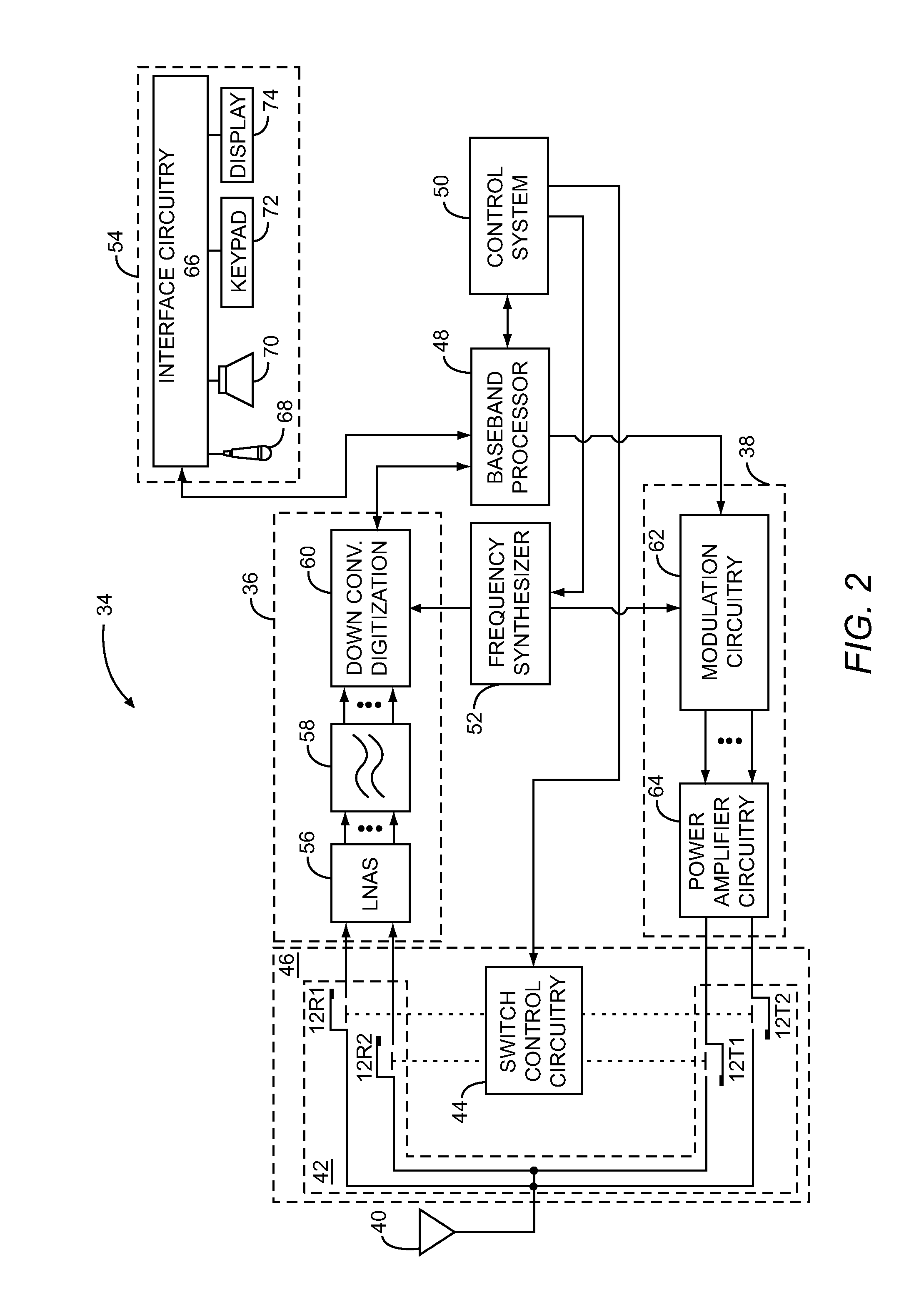Actuation signal for microactuator bounce and ring suppression
a micro-actuator and actuation signal technology, applied in the field of micro-electromechanical system (mems) micro-actuators, can solve the problems of excessive wear, increase the closing time, and degrade the circuit performance, and achieve the effect of reducing bouncing and ringing and reducing the least possible amount of bouncing
- Summary
- Abstract
- Description
- Claims
- Application Information
AI Technical Summary
Benefits of technology
Problems solved by technology
Method used
Image
Examples
Embodiment Construction
[0025]The embodiments set forth below represent the necessary information to enable those skilled in the art to practice the disclosure and illustrate the best mode of practicing the disclosure. Upon reading the following description in light of the accompanying drawing figures, those skilled in the art will understand the concepts of the disclosure and will recognize applications of these concepts not particularly addressed herein. It should be understood that these concepts and applications fall within the scope of the disclosure and the accompanying claims.
[0026]For the purposes of the present disclosure, directional terms such as “front”, “back”, “top”, “bottom”, “above”, “below”, “left”, “right”, “horizontal”, “vertical”, “up”, “down”, “upward”, “downward”, etc. are merely used for convenience in describing the various embodiments of the present disclosure. It is to be understood that the embodiments of the present disclosure may be oriented in various ways.
[0027]The system and...
PUM
 Login to View More
Login to View More Abstract
Description
Claims
Application Information
 Login to View More
Login to View More - R&D
- Intellectual Property
- Life Sciences
- Materials
- Tech Scout
- Unparalleled Data Quality
- Higher Quality Content
- 60% Fewer Hallucinations
Browse by: Latest US Patents, China's latest patents, Technical Efficacy Thesaurus, Application Domain, Technology Topic, Popular Technical Reports.
© 2025 PatSnap. All rights reserved.Legal|Privacy policy|Modern Slavery Act Transparency Statement|Sitemap|About US| Contact US: help@patsnap.com



